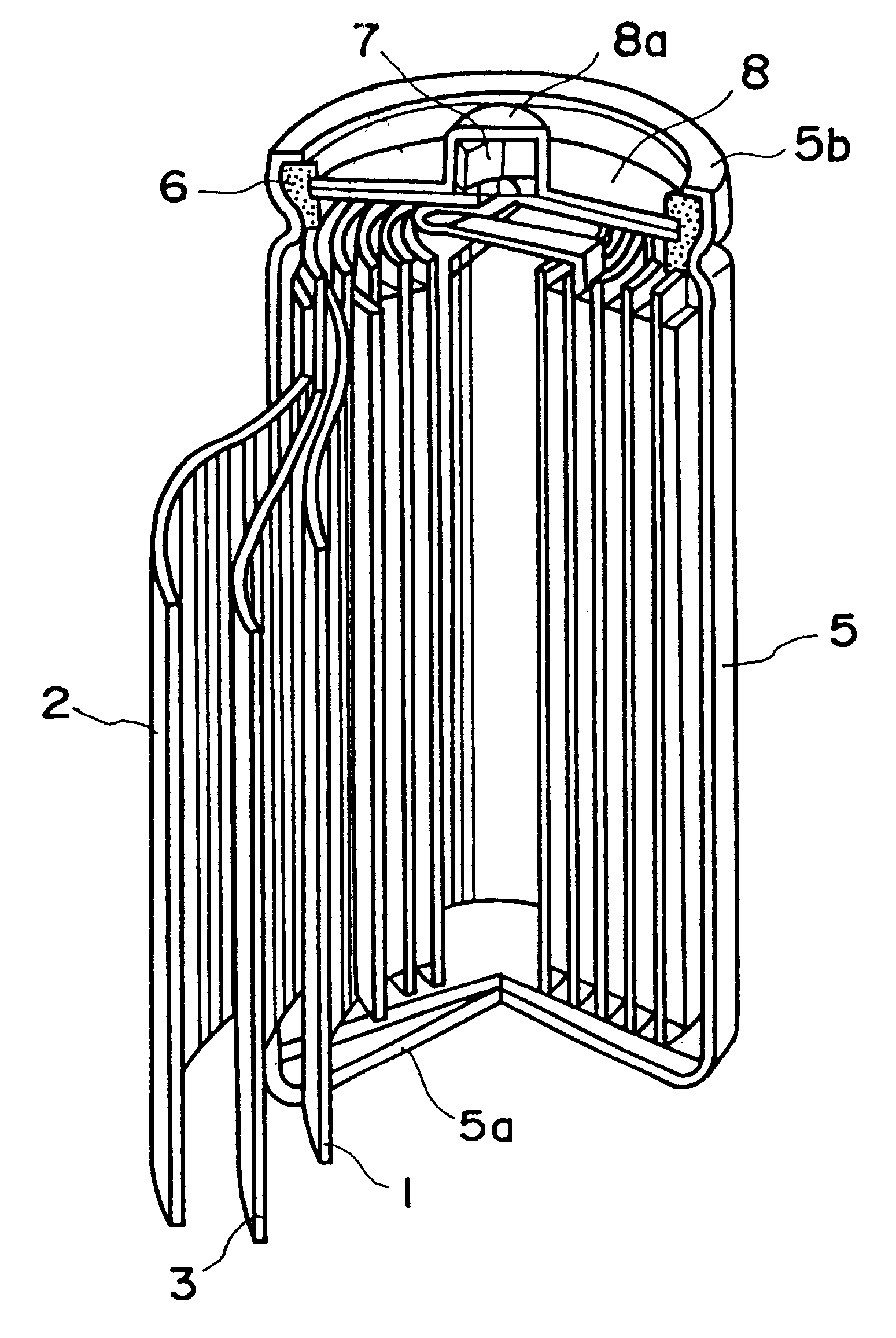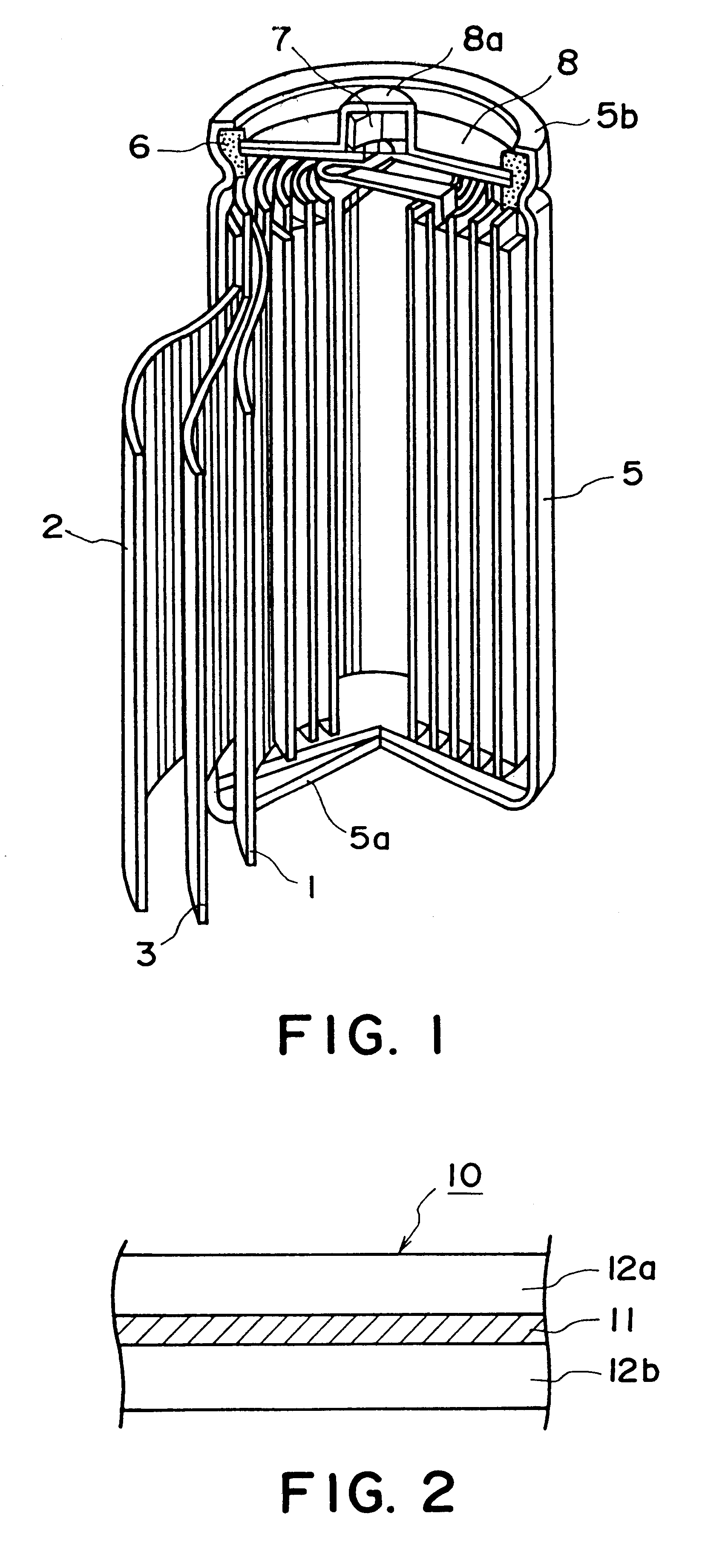Carbonaceous electrode material for non-aqueous secondary battery
a secondary battery and carbonaceous electrode technology, applied in the direction of cell components, basic electric elements, electrochemical generators, etc., can solve the problems of inferior charging characteristic, accompanied by difficulties, and negative electrode batteries using lithium metal as secondary batteries, and achieve the effect of increasing the doping and dedoping capacity
- Summary
- Abstract
- Description
- Claims
- Application Information
AI Technical Summary
Benefits of technology
Problems solved by technology
Method used
Image
Examples
example 1
A starting material was provided by mixing chops (in sizes of ca. 3 mm.times.3 mm.times.3 mm) of bamboo of genus Pleioblastus and chops (in sizes of ca. 3 mm.times.3 mm.times.3 mm) of bamboo of genus Bambusa, respectively grown in Vietnam, in a weight ratio of 1:1, and was heated to 500.degree. C. and held at 500.degree. C. for 5 hours in a nitrogen atmosphere (normal pressure) for preliminary calcination, to prepare a carbon precursor having a volatile matter content of at most 2 wt. %. The carbon precursor was pulverized into a powdery carbon precursor having a weight-average particle size of ca. 25 .mu.m, which exhibited a potassium content of 0.5 wt. %. Ca. 3 g of the powdery carbon precursor was piled in a layer of ca. 1-2 mm in thickness in an aluminum-made crucible and then placed in a horizontal tubular furnace of 75 mm in diameter to be heated to 1200.degree. C. at a rate of 5.degree. C. / min. and held at 1200.degree. C. for 1 hour for carbonization while flowing nitrogen ga...
example 2
The powdery carbon precursor prepared in Example 1 was subjected to a de-ashing treatment in two cycles each including dipping within 35%-hydrochloric acid for 1 hour and washing in boiling water for 1 hour to obtain a de-ashed powdery carbon precursor, which exhibited a potassium content of at most 0.1 wt. %. The de-ashed powdery carbon precursor was again pulverized to form a powdery carbon precursor of 25 .mu.m in average particle size. Ca. 3 g of the powdery carbon precursor was piled in an aluminum-made crucible and then placed in a horizontal tubular furnace of 75 mm in diameter to be heated to 1100.degree. C. at a rate of 5.degree. C. / min and held at 1100.degree. C. for 1 hour for carbonization.
examples 3 and 4
Carbonaceous materials were prepared in the same manner as in Example 2 except for changing the carbonization temperature to 1200.degree. C. (Example 3) and 1300.degree. C. (Example 4), respectively.
PUM
| Property | Measurement | Unit |
|---|---|---|
| BET specific surface area | aaaaa | aaaaa |
| density | aaaaa | aaaaa |
| density | aaaaa | aaaaa |
Abstract
Description
Claims
Application Information
 Login to View More
Login to View More - R&D
- Intellectual Property
- Life Sciences
- Materials
- Tech Scout
- Unparalleled Data Quality
- Higher Quality Content
- 60% Fewer Hallucinations
Browse by: Latest US Patents, China's latest patents, Technical Efficacy Thesaurus, Application Domain, Technology Topic, Popular Technical Reports.
© 2025 PatSnap. All rights reserved.Legal|Privacy policy|Modern Slavery Act Transparency Statement|Sitemap|About US| Contact US: help@patsnap.com


